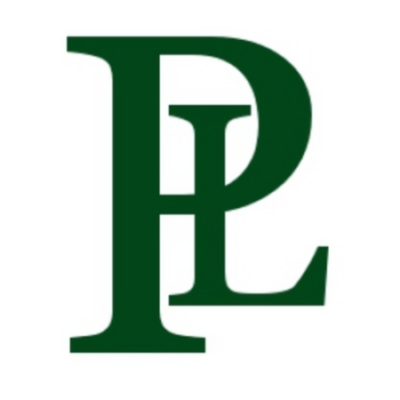In Pierluissi v. City of New York, No. 153439/2023, 2025 WL 928908 (N.Y. Sup Ct, New York County Mar. 26, 2025), the court, inter alia, denied defendant’s motion to dismiss plaintiff’s claims of retaliation under the New York State and City Human Rights Laws.
From the decision:
Under the NYSHRL, “[i]t shall be an unlawful discriminatory practice for any person engaged in any activity to which this section applies to retaliate or discriminate against any person because he or she has opposed any practices forbidden under this article” (Executive Law § 296 [7]). To establish a claim for retaliation under the NYSHRL, a plaintiff “must show that (1) she has engaged in protected activity, (2) her employer was aware that she participated in such activity, (3) she suffered an adverse employment action based upon her activity, and (4) there is a causal connection between the protected activity and the adverse action” (Forrest v Jewish Guild for the Blind, 3 NY3d 295, 312–13 [2004]; accord Harrington v City of New York, 157 AD3d 582, 585 [1st Dept 2018]; see also Littlejohn v City of New York, 795 F 3d 297, 316 [2d Cir 2015] [for a NYSHRL retaliation claim to survive a motion to dismiss, a plaintiff must “plausibly allege() a causal connection between the protected activities and the adverse employment action”]).
An employee engages in a “protected activity” by “opposing or complaining about unlawful discrimination” (Forrest, 3 NY3d at 313; see also Davis-Bell v Columbia Univ, 851 F Supp 2d 650, 682 [SDNY 2012]). Regarding the knowledge element of a retaliation claim, “nothing ‘more is necessary than general corporate knowledge that the plaintiff has engaged in a protected activity’ ” (Seemungal v New York State Dept. of Fin. Servs., 222 AD3d 467, 468 [1st Dept 2023] [citation omitted]).
Further, it has been held that “[a] causal connection between a protected activity and a negative employment outcome may be reasonably inferred from the passing of a brief period of time between the two” (Gershenson v Local 52, I.A.T.S.E, 2022 NY Slip Op 32546[U], ** 13-14 [Sup Ct, NY County 2021]; see Ramos v Metro-North Commuter R.R., 194 AD3d 433, 434 [1st Dept 2021] [“The temporal proximity between plaintiff’s EEOC complaint and the incident leading up to her termination, and her termination raise an issue of fact as to a causal connection, as these events occurred within weeks of each other”]).
Under the NYCHRL, it is unlawful to retaliate against an employee for opposing discriminatory practices (Administrative Code of City of NY § 8-107 [7] see Nezaj v PS450 Bar & Rest., 719 F Supp 3d 318, 330 [SD NY 2024]). To establish a claim for retaliation under the NYCHRL, a complainant must show that (1) she engaged in a protected activity, (2) the employer was aware that she participated in such activity, (3) the employer engaged in conduct which was reasonably likely to deter a person from engaging in that protected activity, and (4) there is a causal connection between the protected activity and the alleged retaliatory conduct (see Sanderson–Burgess v City of New York, 173 AD3d 1233, 1235–1236 [2d Dept 2019]; accord Parham v City of New York, 84 Misc 3d 1204[A], 2024 NY Slip Op 51360[U], * 7 [Sup Ct, NY County 2024]). “Protected activity” refers to “actions taken to protest or oppose statutorily prohibited discrimination” (Aspilaire v Wyeth Pharmaceuticals, Inc., 612 F Supp 2d 289, 308 [SD NY 2009]).
Administrative Code § 8-107 (7) should be construed “like other provisions of the City’s Human Rights Law, broadly in favor of discrimination plaintiffs, to the extent that such a construction is reasonably possible” (Fletcher v Dakota, Inc., 99 AD3d 43, 51 [1st Dept 2012]). Furthermore, “the language of the City HRL does not permit any type of challenged conduct to be categorically rejected as nonactionable” (Williams, 61 AD3d at 71).
Despite defendants’ contentions, plaintiff has adequately stated a cause of action for retaliation under both the NYSHRL and the NYCHRL. As to the first two elements of a retaliation cause of action, plaintiff alleges that he filed complaints about the allegedly discriminatory conduct in November 2019, May 2021, and December 2021, and that defendants Maric and Fills stated clearly that they were aware that plaintiff and other minority officers had filed complaints of discrimination against them, but that they did not care (complaint, ¶¶ 48-58, 120-125, 201, 210-211, 226-229). Plaintiff further alleges that the City was aware of the discrimination and the complaints filed by plaintiff, but did nothing to intervene (id., ¶¶ 244-245).
As to the third element, plaintiff also sufficiently pleaded that he suffered an adverse employment action pursuant to the NYSHRL, and experienced an employment action that was reasonably likely to deter him from engaging in the protected activity under the NYCHRL. Plaintiff alleges that, as a direct result of filing the discrimination complaints, he was subjected to adverse employment actions and numerous efforts to prevent further protected activity. He alleges that, immediately following these complaints, he was given punishment posts (id., ¶ 61), denied police vehicles (id., ¶ 129), denied lucrative specialized units (id., ¶ 180), denied overtime (id., ¶ 214), received unwarranted discipline (id., ¶¶ 248, 254), and was denied promotion to detective (id., ¶ 25, 97-98).
Finally, plaintiff has adequately alleged a causal connection between the protected activity and the adverse action, which, he alleges, occurred “following plaintiff’s complaint of discrimination” (id., ¶ 234).
The court also held that plaintiff stated claims for discrimination and hostile work environment.
